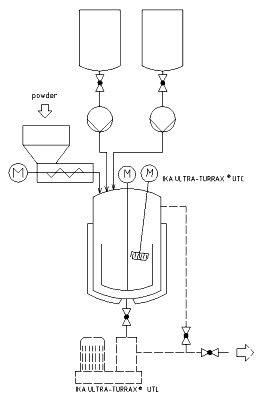


|
|||||
| INDUSTRY of POLYMERS | |||||
| 1. Underseal | |||||
Underseal, e.g. for vehicles, has to protect them from mechanical damages like stoning, but also from corrosion. That means that good adhesive properties, working properties, flow properties and elasticity are requested. Therefore polyvinyl chloride is the basis for this kind of protective coatings. The compositions of such coatings are as numerous as the demands made on them. The most important components are:
|
|||||
|
|||||
| The dispersions are produced with a rather high viscosity, requesting a long, intensive mixing. Particle size reduction does not have top priority. | |||||
| Production in a Batch Process | |||||
 |
|||||
|
|||||
Advantages:
|
|||||
|
|||||
| Back to top | |||||